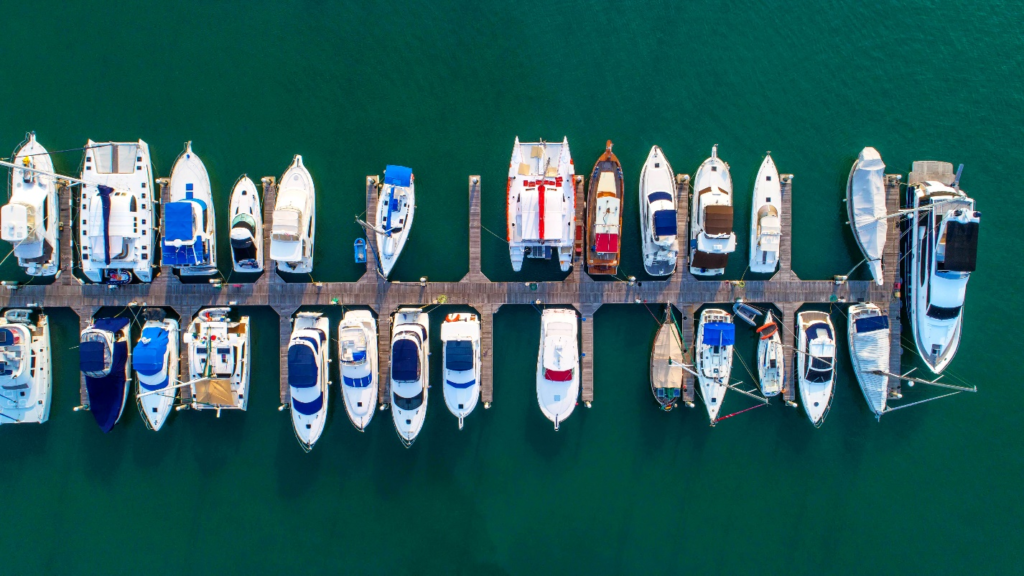Docking a Yacht: Is it Better to Dock Against or With the Current?


Last Updated on September 23, 2023.
Docking a yacht is a crucial aspect of boating that requires careful consideration. One of the primary concerns is whether to dock against the current or with the current. This decision can impact the safety of the boat and its passengers, as well as the ease of docking.
Docking against the current can be challenging, but it has its advantages. When the boat is facing the current, it is easier to control the speed and direction of the boat. This can be especially useful in areas with strong currents or winds. Additionally, docking against the current can help prevent the boat from drifting away from the dock, which can be a significant safety concern. However, docking against the current can also be more difficult and require more skill. The boat may need to be maneuvered in tight spaces, and the current can make it challenging to maintain control of the boat.
On the other hand, docking with the current can be easier and require less skill. The boat will naturally drift towards the dock, making it easier to line up the boat with the dock. However, docking with the current can also be riskier. The boat may drift too fast towards the dock, making it difficult to control the boat’s speed and direction. Additionally, if the boat is not secured properly, it can drift away from the dock, posing a safety risk.
When docking a yacht, it is important to consider the strength and direction of the current. Docking against the current can make it easier to control the boat’s speed and direction, but it may also increase the risk of damage to the yacht and the dock. Docking with the current can make it more challenging to control the boat’s speed and direction, but it may also reduce the risk of damage to the yacht and the dock.
Wind direction is another factor to consider when docking a yacht. Docking against the wind can make it easier to control the boat’s speed and direction, but it may also increase the risk of damage to the yacht and the dock. Docking with the wind can make it more challenging to control the boat’s speed and direction, but it may also reduce the risk of damage to the yacht and the dock.
The size and weight of the yacht can also affect the docking process. Larger and heavier yachts may be more difficult to control in the current, making it more challenging to dock against the current. In these cases, it may be better to dock with the current to reduce the risk of damage to the yacht and the dock.
The configuration of the dock is another important factor to consider when docking a yacht. Some docks are designed to accommodate boats docking against the current, while others are designed for boats docking with the current. It is important to choose a dock that is appropriate for the yacht and the current conditions.
In summary, when deciding whether to dock a yacht against the current or with the current, it is important to consider factors such as current strength, wind direction, boat size and weight, and dock configuration. By carefully considering these factors, yacht owners can make informed decisions about how to dock their boats safely and effectively.
Docking a yacht against the current can be a challenging task, but it can also have its advantages. In this section, we will explore the advantages and disadvantages of docking a yacht against the current.
When docking against the current, the yacht will have more control and maneuverability, making it easier to position the vessel in the desired location. Additionally, the yacht will be able to maintain a slower speed, which can help reduce the risk of damage to the boat or the dock.
Docking against the current can also be beneficial in areas with strong currents. By approaching the dock against the current, the yacht can use the current to help slow down and maintain a controlled approach.
Docking against the current can also have its disadvantages. For example, if the current is too strong, it can make it difficult to maintain control of the yacht. Additionally, if the yacht is not properly positioned, it can be pushed away from the dock by the current, making it difficult to secure the boat.
Another disadvantage of docking against the current is that it can be more challenging to maneuver in tight spaces. This is because the yacht will be moving in the opposite direction of the current, which can make it more difficult to turn and position the boat.
Overall, docking against the current can be a viable option in certain situations, but it is important to consider the current strength and other factors before attempting to dock in this manner.
When docking a yacht, one of the important considerations is the direction of the current. Docking with the current means that the boat is moving in the same direction as the current while approaching the dock. In this section, we will explore the advantages and disadvantages of docking with the current.
Docking with the current can make the docking process easier and safer for the yacht and its passengers. Here are some advantages of docking with the current:
While there are advantages to docking with the current, there are also some potential disadvantages to consider:
In conclusion, docking with the current has its advantages and disadvantages. It can make the docking process easier and safer, but it also has limitations and risks to consider. The captain should carefully assess the conditions and make a decision based on the safety and well-being of the yacht and its passengers.
In conclusion, the decision to dock a yacht against or with the current ultimately depends on various factors such as the wind, tide, and size of the vessel. However, it is generally recommended to dock a yacht against the current as it provides better control and reduces the risk of damage to the yacht.
Docking with the current can be challenging, especially in strong currents, as it can cause the yacht to drift and lose control. Moreover, it can also increase the risk of collision with other vessels or the dock itself. On the other hand, docking against the current allows the yacht to maintain its position and control, making it easier to maneuver into the slip.
It is also important to consider the wind direction when docking a yacht. If the wind is blowing against the current, it can create choppy conditions, making it difficult to dock the yacht. In such cases, it is recommended to dock the yacht with the current to reduce the impact of the wind.
In summary, while there is no one-size-fits-all answer to whether it is better to dock a yacht against or with the current, it is generally safer and more manageable to dock against the current. However, it is essential to consider all the factors involved in the docking process and make an informed decision based on the prevailing conditions.
Get back to enjoying the water with proper yacht maintenance. Download Wave App now: https://wavemarinegroup.com/wave-app/

Commodore of Deals & Keels at Wave Marine Group
Born and raised in the U.K. to a sailing enthusiast family, James has a lifelong connection to the water. He combined his passion for yachting with his expertise in technology, rising to Director of Information Technology at Lazzara Yacht Corporation. After achieving record sales at Sunseeker Florida, he later co-founded Wave Marine Group, a marine-tech company, with business partner Anthony Burns.